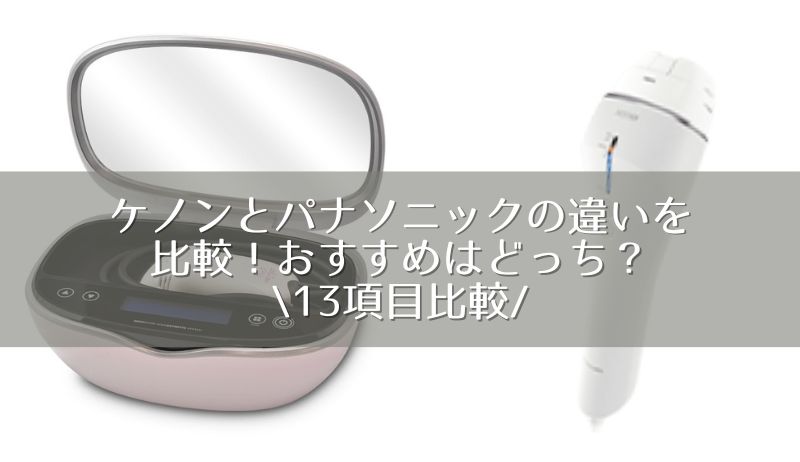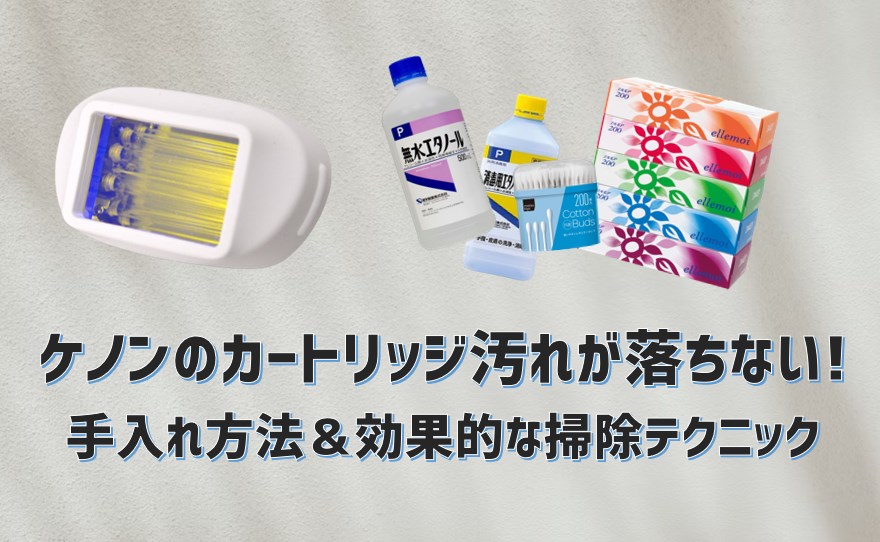ステマ規制への対応。本コンテンツは当サイトが独自に制作しており、メーカー等から商品提供や広告を受けることもありますが、コンテンツの内容やランキングの決定には一切関与していません。メーカー等の指示による表示部分にはPRを表記します。詳しくはコンテンツ制作・運営ポリシー・をご覧ください。
この記事では、ケノンのセット内容パターンについて解説をしています。
ケノンのセット内容パターンにいつでも豪華なので損することはありません。
それよりも「どのパターンが良いのか?「「いつ買えば損をしないのか」と迷っている方が脱毛機会を先延ばしにしてしまい損になってしまいます。
ケノンは人気商品なので在庫切れで買いたい時に変えないケースもゼロではありません。
また最新の「ストリング2」カートリッジの登場により、セット内容の魅力がさらに高まっています!
ケノンのセット内容パターンについて詳しく知りたい人はこの記事を、今日のセット内容で購入したい人は公式サイトをチェックしてください。
\ 本日のセット内容はこちら/
ケノン史上最高峰の実感と絶賛のカートリッジがセット!
ケノンのセット内容パターンについて
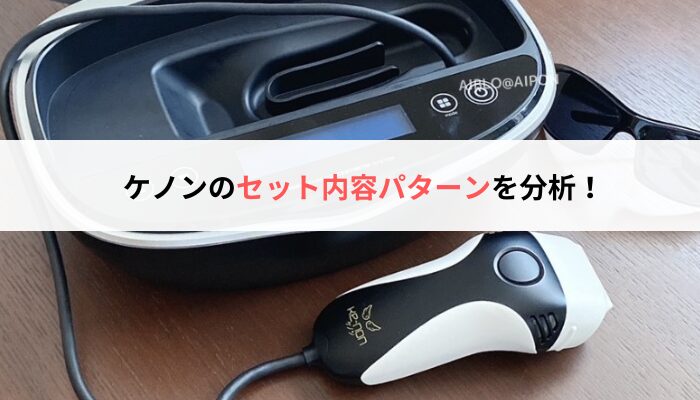
ケノンのセット内容パターンが気になる人も多いはず。
そこでケノンのセット内容パターンについて分ったことを、詳しく解説していきます。
ケノンセット内容パターンは日替わりする
ケノンの公式サイトでは、日替わりセット内容を提供しており、色々なバリエーションがあります。
ケノンの公式サイトによれば、
セットの内容は日常的にポイントやクーポンを含めたバリエーションを加えて販売しております。(中略)ケノンのセット販売は個別に違うお客様のニーズのためのサービスであり、よくある期間限定の安売りキャンペーンとは目的そのものが違います。
ケノン公式サイト
と記されています。
つまり、ケノンでは個別に違うお客様のニーズに応えるために、このような日替わりでセット内容のパターンを変えているということです。
そのため、気に入ったセット内容を見つけたら、すぐに購入することが賢明です。
なぜなら、そのセット内容は次の日には変わってしまい、同じ内容がいつ再び提供されるかは予測できないからです。
あなたが気に入ったセット内容でなくてもケノンを買いたいと思ったタイミングを逃すと、在庫切れになったり、脱毛機会を遅らせることになるだけです。
本日のセット内容でケノンを購入したい人は、公式サイトをチェックしてください。
\ 最新の日替わりセットはこちら/
ケノン史上最高峰の実感と絶賛のカートリッジがセット!
ケノンのセット内容パターンは完全非公開
ケノンの公式サイトでは、セット内容のパターンは完全に非公開であり、在庫に応じて日々バリエーションが変化しています。
基本的のセット内容パターンは以下の通りですが、日替わり特典はサイトでのみ確認可能です。
- ケノン本体
- スーパープレミアムカートリッジ
- 電源コード
- 取扱説明書
- 保冷剤
- サングラス
- 専用ポーチ
毎日のセット内容や特典については、ケノン公式サイトをチェックすることをお勧めします。
気に入ったセットがあれば、その日のうちに購入するようにしましょう。
なぜなら、そのセット内容は翌日には変わってしまい、同じ内容がいつ再び提供されるかは分からないからです。
また、お気に入りのセット内容になるまで待つことは、あなたの脱毛機会を遅らせることになってしまいます。
ケノンのセット内容はいつでも豪華で損をしない内容になっているので、今すぐケノンが欲しいという方は公式サイトをチェックしてください。
\ 最新の日替わりセットはこちら/
ケノン史上最高峰の実感と絶賛のカートリッジがセット!
ケノンセット内容にはスーパープレミアムカートリッジが付属
公式サイトによるとスーパープレミアムカートリッジは「商品に付帯する」と記されています。
つまり、ケノンのセット内容には、スーパープレミアムカートリッジが標準で含まれているということです。
スーパープレミアムカートリッジはケノンのカートリッジの中でも、パワーも、長寿命、照射面積もケノン史上最高レベルのオールラウンドなカートリッジです。
- 長寿命:レベル1で300万発、レベル10でも50万発
- 瞬間最大出力20%UP
- 照射面積が7㎠
全身どこにでも使用できる汎用性の高さも魅力の一つです。
最初はスーパープレミアムを使ってみて、残った毛が頑固な場合は、ストロングを使って仕上げるのもいいかもしれませんね。
ケノンのセット内容パターンは在庫状況で替わる
ケノンのセット内容パターンは在庫状況でも変るため、中身を予測することはできません。
ケノンは家庭用光美容器として非常に人気があり、注文が集中しているため、時折品切れの状態になることがあります。
もし、ご希望のセット内容パターンに出会えた場合は、かなりラッキーです。
その機会を逃すと、次はいつ同じようなセット内容パターンになるか分かりませんので、早めに注文するようにしましょう!
公式サイトでのセット内容の更新は、在庫に応じて行われるため、ケノンの購入を検討している人は定期的にサイトをチェックするようにてください。
ケノンの購入タイミングは、あなたが脱毛をしようと思ったタイミングがベストです。
脱毛ケアは時間がかかるので、早めの行動をこころがけましょう。
ケノンセット内容パターンの周期は深夜0時
ケノンのセット内容は毎晩深夜0時に更新されることが分かりまました。
もし、お気に入りのセットを見つけたら、その日のうちに手に入れることをお勧めします。
なぜなら、翌日に同じセットが提供される保証はなくセット内容は常に変わり続けるからです。
特に春から夏にかけては、ケノンの人気が高まり、在庫が不足する可能性があります。
欲しいと思ったセットがあれば、迷わずに購入することが賢明です。
毎日のセット内容の変更は、ケノン公式サイトでのみ確認できるため、購入機会を逃さないようにしてください。
\ 最新の日替わりセットはこちら/
ケノン史上最高峰の実感と絶賛のカートリッジがセット!
ケノンのセット内容は非正規店で買えない!
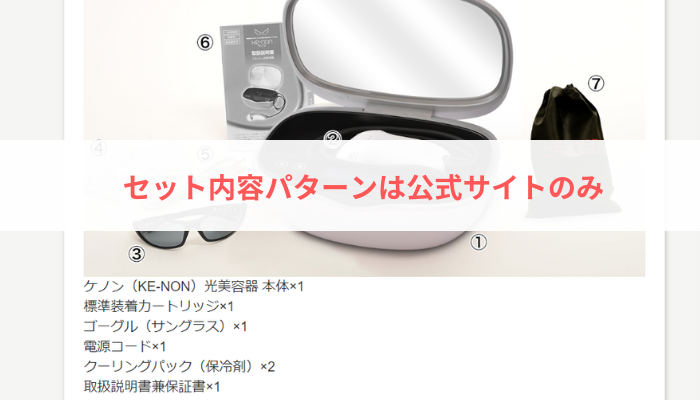
ケノンの公式サイトでは、独自のセット内容パターンを提供しており、これらは公式サイト限定の特典のようなものです。
非正規販売店では、これらのセット内容パターンを見つけることはできません。
正規販売店に関する情報は、ケノンの公式サイトに記載されており、「アローエイト株式会社」と「株式会社エムロック」が正規オンラインショップとして認定されています。
もし正規販売店であるか疑わしいサイトを発見した場合は、公式サイトに情報を提供することが推奨されています。
非正規販売店での購入は、メーカー保証が適用されないリスクがあるため、注意が必要です。
正規販売店からの購入を心がけ、公式サイトで最新のセット内容や特典情報を確認することをおすすめします。
ケノンがセット内容を提供してる公式サイト
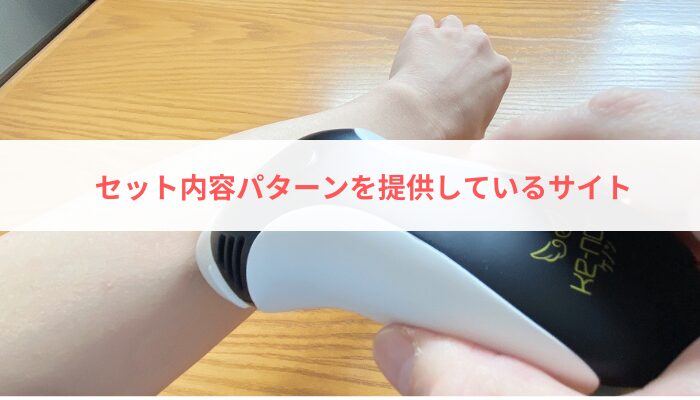
ケノンの特別なセット内容は、認定された正規販売店でのみ提供されています。
これらの正規販売店には、アローエイト株式会社が運営するケノン公式サイトや、株式会社エムロックが管理するケノン公式の楽天市場、Amazon、Yahoo!ショッピングの店舗が含まれます。
正規販売店からの購入は、品質保証と安心を提供し、最高の顧客体験を保証します。
お求めの際は、これらの信頼できる公式サイトからのみ購入するようにしましょう。
正規販売店でのみ、ケノンの完全なセット内容と最新の特典を確認できます。
ケノン購入時はカートリッジがセットでお得!
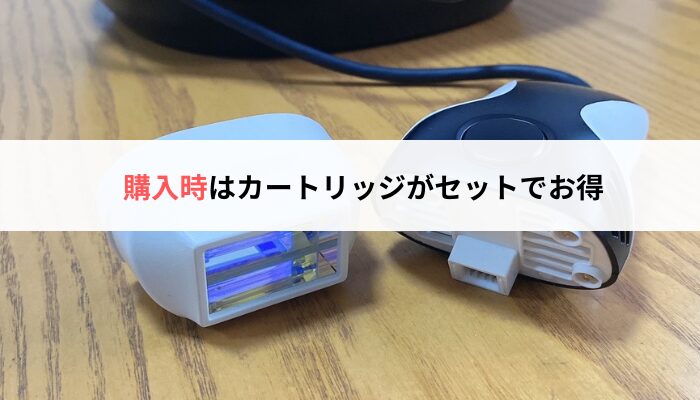
ケノンの公式では、本体購入時に追加のカートリッジを特別価格で購入することができます。
日替わりで更新されるセット内容をチェックし、必要なカートリッジがあれば、同時購入で最大54%割引されます。
同時に買える単品カートリッジ(クリックで見る)
| カートリッジ | 通常価格 | 同時購入価格 | 割引率 | おすすめの人 |
|---|---|---|---|---|
| ストリング | 10,900円 | 4,980円 | 54%値引き | |
| スキンケア | 7,900円 | 3,980円 | 49%値引き | |
| エクストララージ | 10,900円 | 4,980円 | 54%値引き | |
| スーパープレミアム | – | 12,800円 | – |
※価格は税込みです。
※スーパープレミアムカートリッジはケノン本体と同時購入のみ販売
例えば、美顔スキンケアカートリッジなら脱毛だけでなく肌のケアも一緒に行うことが可能になります。
また、ストロングカートリッジは、より強い毛にも迅速に対応でき、最大限のパワーでしっかりとトリートメントできます。
複数のカートリッジを持っていると、自分好みにカスタマイズして使用する楽しみがあり、まるでオーダーメイドのような使用感を得られます。
ただし、後から単品でカートリッジを購入しようと思っても、同時購入時のような大幅な割引は適用されません。
お得なこの機会を逃さないように、ぜひ公式サイトで最新のセット内容をご確認ください。
\ 最新の日替わりセットはこちら/
ケノン史上最高峰の実感と絶賛のカートリッジがセット!
ケノンのセット内容パターンについての口コミ・評判

ケノンの情報収集をするためには、SNSや公式サイトのレビューをチェックすることです。
多くのユーザーが購入体験や使用後の感想を共有しており、写真付きで投稿しています。
ケノンの公式サイトにはカートリッジに関するもに関するレビューも参考になります。
実際にレビューを読んで購入を決めるというのも、賢い選択肢の一つです。
公式サイトのレビューやSNSの口コミは、商品の実際の使用感を知るためにも是非ご参考にしてください。
迷っていたらセット内容が変わってしまった人の口コミ
Qoo10でのケノン売り切れ、残念でしたね。セット内容が日々変わるので、迷っている間にも変化してしまうのは確かに悩ましいです。カートリッジが多いセットを狙っているなら、公式サイトの更新を頻繁にチェックするのが良さそうです。在庫が復活したり、お得なセットが出るかもしれませんよ!
迷っているうちにセット内容が変わってしまった人の口コミ
セット内容が変わってしまうタイミングは本当に残念ですね。ケノンの公式サイトでは毎日セット内容が更新されるので、気になるセットがあればすぐに手を打つのがベストです。次回はお気に入りのセットを見つけたら、迷わずに購入を検討してみてください。在庫やセット内容は常に変動するので、チャンスを逃さないようにしましょう!
希望のセット内容で購入できた人の口コミ
おめでとうございます!カートリッジ3個セットになったケノンを手に入れられて、本当に良かったですね。スーパープレミアム、美顔、ストロング2の組み合わせは素晴らしい選択ですし、ワイドカートリッジの追加も素敵ですね。届くのが待ち遠しいですね!
ケノンケノンのセット内容パターンまとめ
ケノンのセット内容パターンに関する情報を解説してきました。
セット内容パターンは非公開となっており、在庫によって異なることも明らかになりました。
- スーパープレミアムカートリッジは、すべてのセットに標準装備されています。
- セット内容は日々更新されます。
- 多様なセット内容が用意されていますが、詳細は非公開です。
- ケノン本体と同時購入することで、4種類のカートリッジが利用可能です。
- セット内容は毎日24時に更新されます。
- 非正規店では特定のセット内容は提供されていません。
- セット内容は在庫に依存します。
- 希望のセット内容が提供されるのを待つこともできますが、そのタイミングは不確定です。
脱毛ケアには時間がかかります。セット内容のタイミングを待っていては脱毛ケアを遅らせてしまうことになってしまいます。
ケノンのセット内容は、いつのタイミングでも豪華であることに変わりはありません。
ケノンで脱毛ケアをした人は、本日のセット内容をチェックしてください。
\ 最新の日替わりセットはこちら/
ケノン史上最高峰の実感と絶賛のカートリッジがセット!



